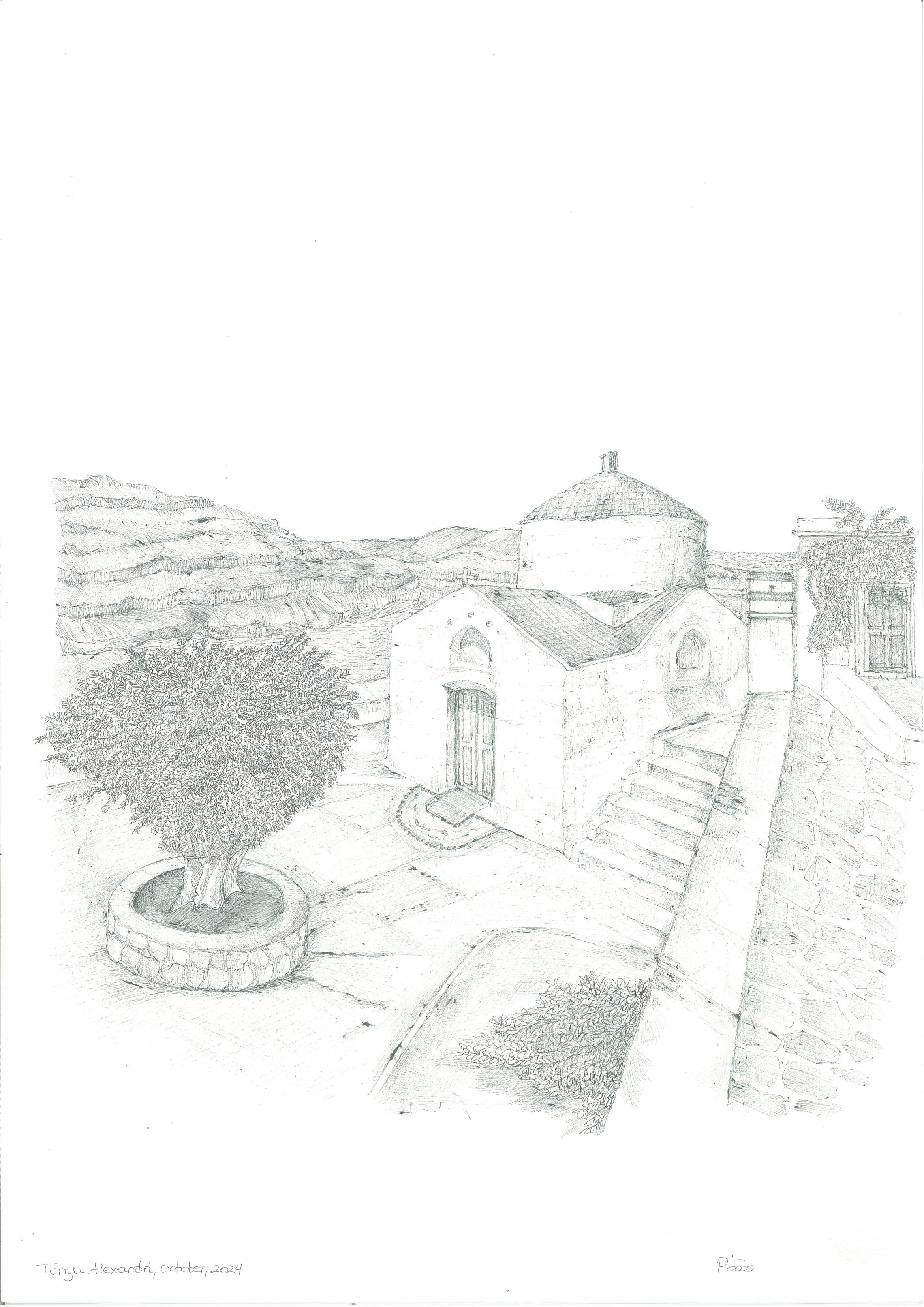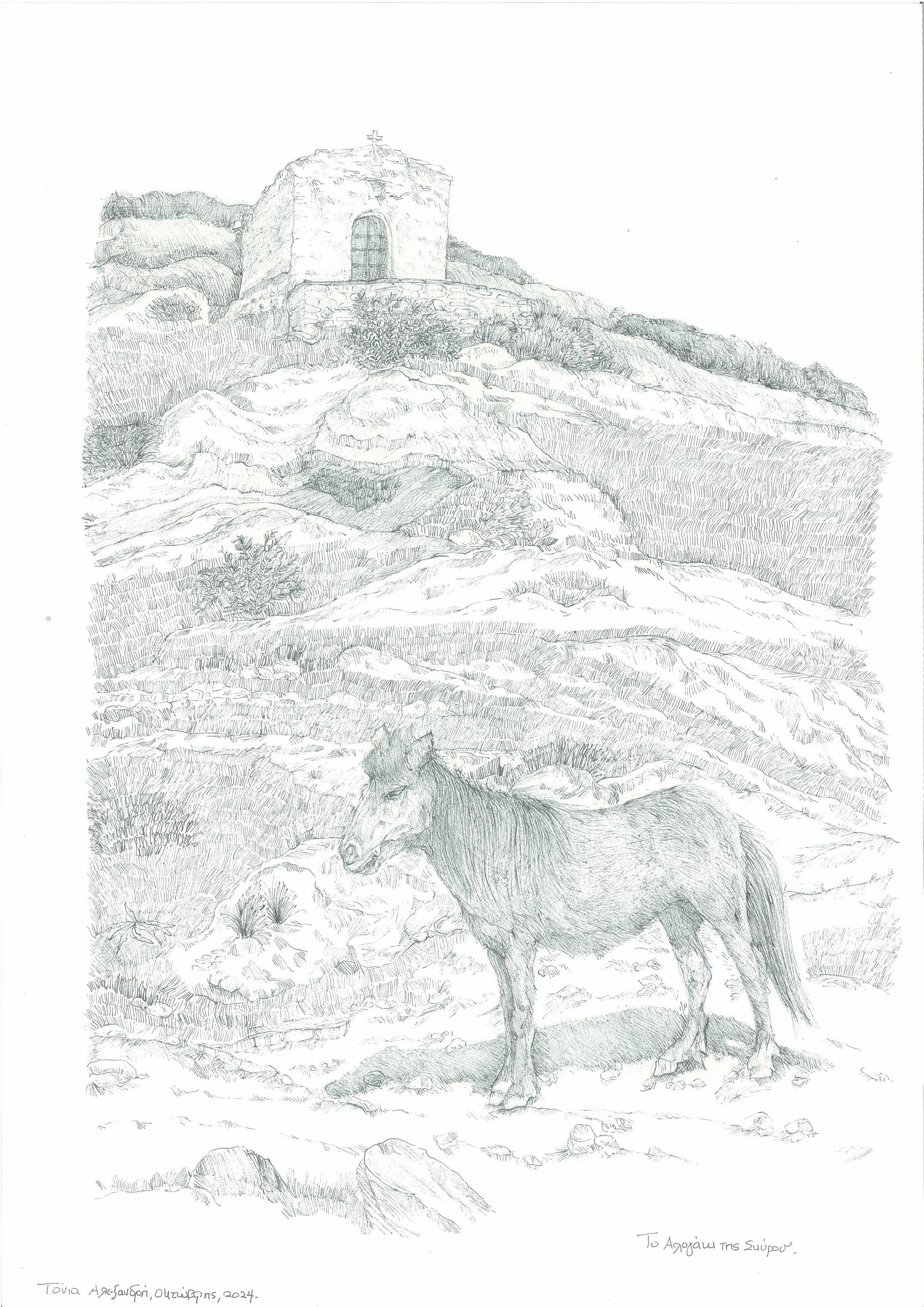Places
Places and literature
“Memory has its own geography.” Akakia Kordosi
“A world which sees art and intellect as suspect cannot hope to carry civilization very far or for very long.” Anita Brookner
“We now receive most information like clouts, like slaps, disconnected, fragments, fragments of information that we are unable after a certain point to connect, and this of course always brings us unpleasant surprises because if you do not connect the information, you do not build that tissue of memory that protects you from unpleasant surprises. Books play this role of the tissue of memory….”. Petros Tatsopoulos
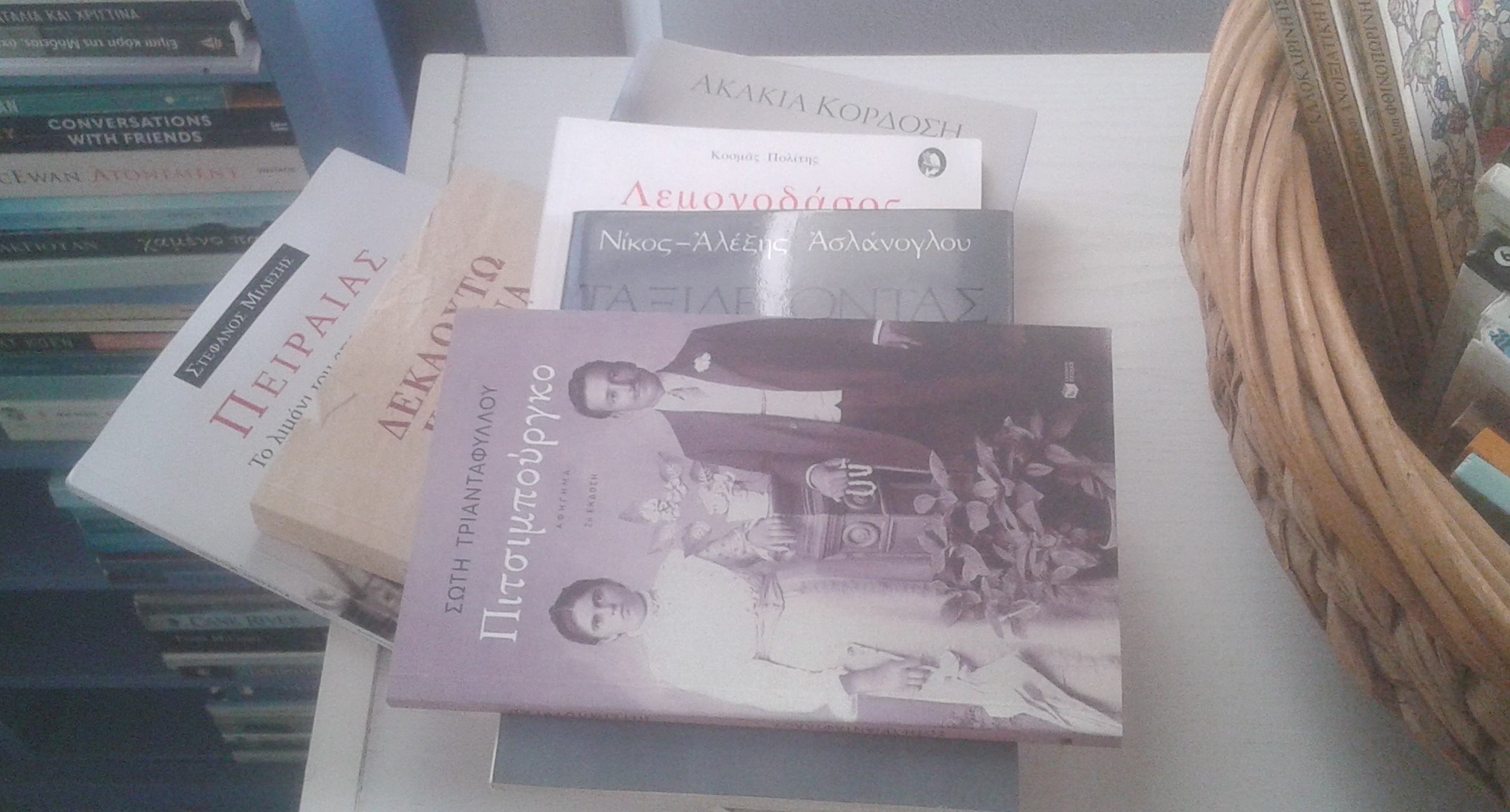
Each new drawing of one more place opens a window into memory, at times evoking nostalgia or the recollection of a literary text. Even the media, pen / ink that I have chosen, tells its own stories and takes me back in time, to adolescence and even further back to childhood, for example, to the transition from pencil to pen and the first fountain pen…

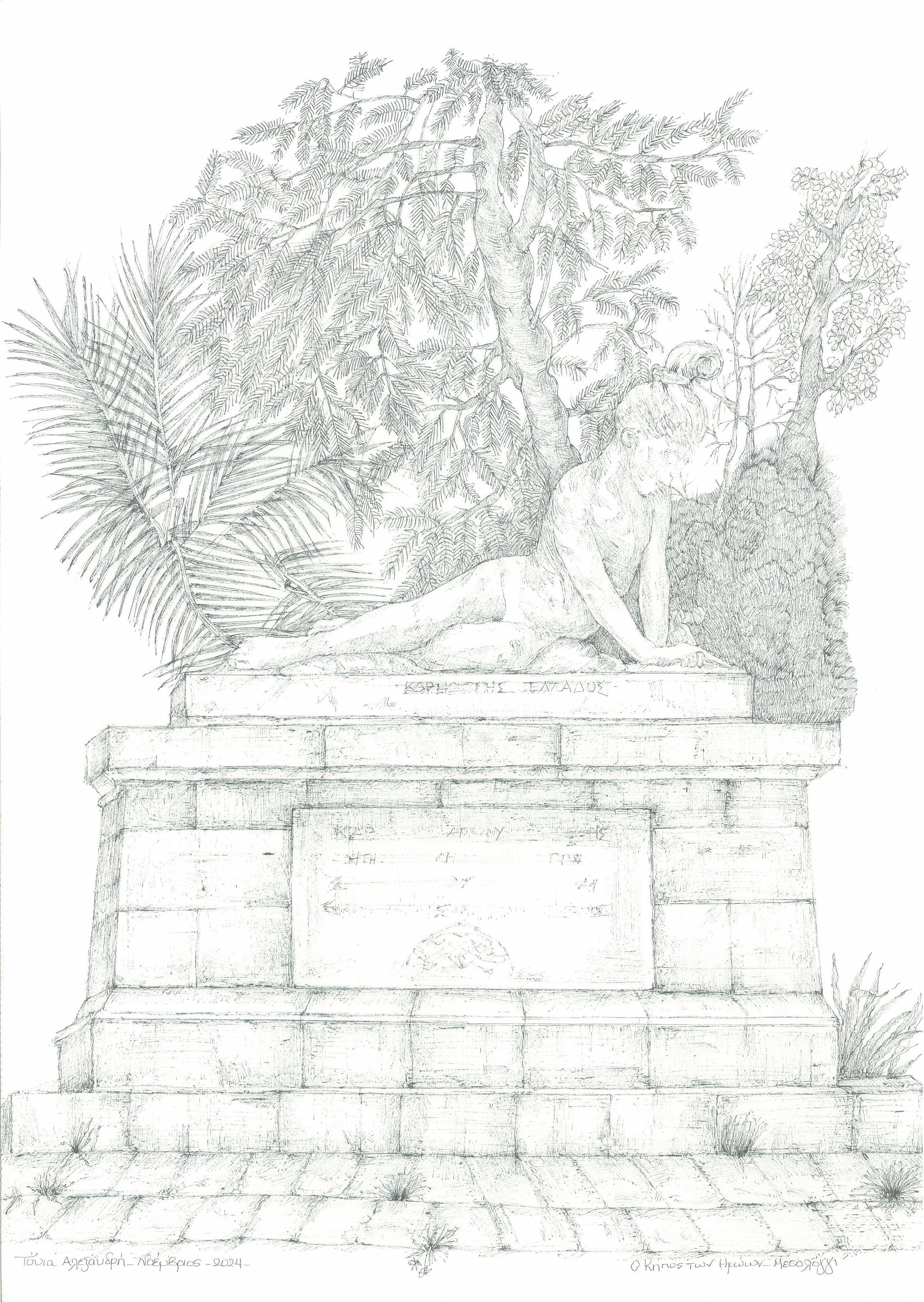
I first heard about Messolonghi through my mother’s stories in childhood. One of her brothers had been transferred and married there and she would visit them in the summers. A vague image of a lagoon existed in my imagination long before I actually saw it decades later.
An excerpt from a book by Akakia Kordosi, who was born in Messolonghi or Avroupoli as she prefers to call her town:
«Ο παράδεισος εκείνος των έξι χρόνων της, πιο σπουδαίος από κάθε ιδεατό παράδεισο – όπως του Ροβινσώνα ή του Παύλου και της Βιργινίας – γιατί ήταν ένας παράδεισος της μνήμης κι όχι της φαντασίας, βρισκόμουν πάνω σ’ ένα πολύ μικρό νησί, στ’ ανοιχτά της θάλασσας της Αβρούπολης, εκεί που τελείωνε η λιμνοθάλασσα κι άρχιζε το πέλαγο…..
Το μικροσκοπικό και χαμηλό εκείνο νησί ενωνόταν με την πόλη μ’ έναν πολύ μακρύ δρόμο, που έκοβε στα δύο τη ρηχή λιμνοθάλασσα………..
Στο νησί εκείνο όλα ήταν μαγικά. Η χαμηλή από ξεραμένο γεμάτο αλάτι και φρυγμένο από τον ήλιο χώμα παραλία, άδεια, γλυκιά και ήσυχη, σε καλούσε να τρέξεις κατά μήκος της πολύ μακριά (ένα παιδικό «μακριά» βέβαια που μπορεί να ερμηνεύεται στην πραγματικότητα σε κάποιες εκατοντάδες μέτρα). Τα ξεβρασμένα τον χειμώνα απ’ τη θάλασσα στεγνά φύκια που τη γαρνίριζαν, σαν παχύ χαλί από σερπαντίνες, σε φώναζε να ξαπλώσεις πάνω του, να κυλιστείς, να στεγνώσεις και να ξαναστεγνώσεις. Γιατί το μπάνιο εκεί ήταν ολοήμερο, αφού η λιμνοθάλασσα ήταν μπροστά σου «ρηχή» – όπως την έλεγε ο ποιητής της – και «ήρεμη», κι έτσι μπορούσες να περπατάς και να παίζεις χωρίς να σου λέει κανένας μεγάλος «μη», μια και το νερό σου έφτανε το πολύ ως το στήθος – το στήθος το παιδικό – για δεκάδες μέτρα από την παραλία, δηλαδή ως εκεί που άρχιζαν τα βαθιά – που ξεχώριζαν καθαρά όχι μόνο απ’ το χρώμα τους αλλά κι απ’ τις σημαδούρες που ήταν στη γραμμή και τον μεγάλο φάρο. Κι όταν βαριόσουν να τσαλαβουτάς, είχες τη διασκέδαση του βαγονέτου. Το βαγονέτο- «πλατφόρμα» όπως το έλεγαν οι εργάτες της αλυκής και πολύ σωστά γιατί πλατφόρμα ήτανε – χρησίμευε να μεταφέρουν το αλάτι απ’ τις αλυκές, όπου το είχαν στοιβαγμένο σε μεγάλες πυραμίδες, ως την άλλη άκρη της παραλίας. Όπου το ζύγιζαν και το φόρτωναν στα καΐκια».
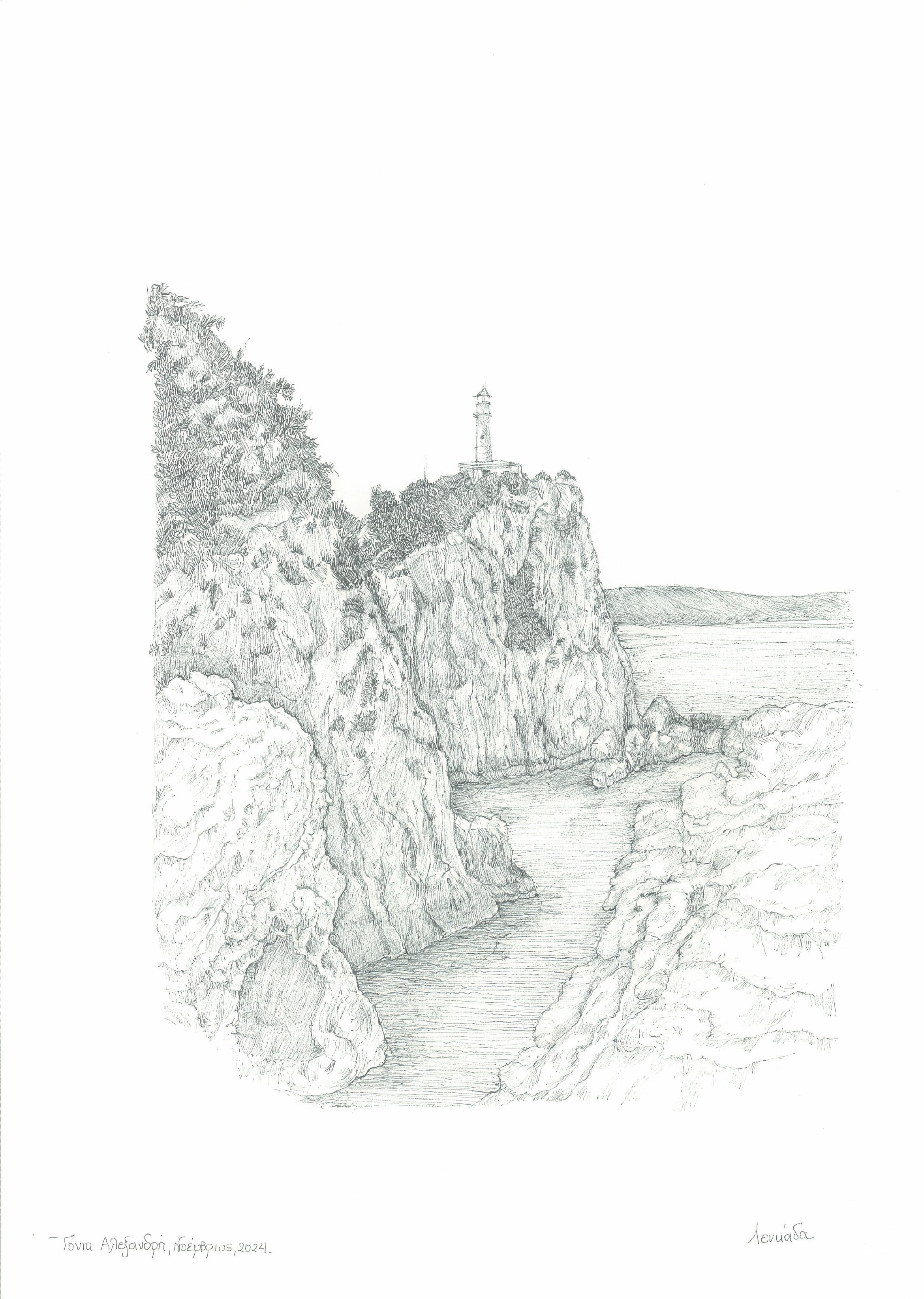
“So Sappho fell and drowned / I tell the man with the green eye, / for someone like you.” Ersi Sotiropoulou
An excerpt from Traveling in the Cool Night (1991) by Nikos – Alexis Aslanoglou:
«Αργά το απόγευμα, πλησιάζοντας το νοτιότερο άκρο της Λευκάδας, όλα λάμπουν στο φως. Σαν ένα ηλιοβασίλεμα στο Θερμαϊκό. Δεκάδες χρωματιστά γουιντσέρφινγκ, μεγάλα ιστιοφόρα και βάρκες στην οργιαστική βλάστηση των νερών. Οι ακτές είναι μέσα στο πράσινο.
Ένα χωριό ψαράδων, η Βασιλική, που έχει όμως περισσότερο αγροτικό χαρακτήρα. Στα δεξιά, λίγα παραθαλάσσια εστιατόρια και ξενοδοχεία. Αριστερά, η πλαζ, τα θαλάσσια σπορ, μοντέρνα καταστήματα παγωτών και φρούτων. Στο τέρμα του ανηφορικού δρόμου που διασχίζει το χωριό, δεκάδες ξενώνες με χαρακτηριστική αρχιτεκτονική μορφή μέσα στα σπάρτα, σε εκτάσεις έρημες. Μια δισκοθήκη μέσα στο λιβάδι, σ’ έναν αχανή κήπο. Τα κάμπινγκ αρχίζουν μετά, δίπλα στη θάλασσα. Τα βράδια φυσάει πάντα ένας άνεμος θερμός, θαλασσινός. Όλα τα μέσα μεταφοράς επιστρατεύονται από κει προς όλα τα σημεία του νησιού. Οι αποστάσεις εκμηδενίζονται. Ποιος βιάζεται να φτάσει στην πόλη της Λευκάδας με 42 βαθμούς;
Μερικές μέρες στο Νυδρί συμπληρώνουν την κοσμοπολίτικη όψη μιας μεταμορφωμένης Λευκάδας. Διεθνές παραθεριστικό κέντρο, μια προσπάθεια που πολύ γρήγορα καρποφόρησε. Σε τρεις λωρίδες: η παραθαλάσσια με δεκάδες κέντρα φαγητού και αναψυχής. Η άσφαλτος με πολυτελή καταστήματα και λιχουδιές. Μετά τα μεσάνυχτα μεταβάλλεται σε Ταγγέρη. Ορχήστρες, δισκοθήκες και καλλιτέχνες του τραγουδιού ακούγονται σε πολύ μεγάλο βάθος στην κωμόπολη. Η ίδια αυτή πόλη έχει πολυδαίδαλους δρόμους όπου επαύλεις συνορεύουν με φάρμες, κήπους με οπωροφόρα ή αγροικίες μοντέρνου ρυθμού. Οι υπηρεσίες προσφέρονται αφειδώς. Τα εκλεκτά πάντα φρούτα είναι ηπειρώτικα. Η τέχνη του νησιού, παραδοσιακή, όπως και οι άνθρωποι. Περιμένουν ασάλευτοι στα κατώφλια τους ξένους…………».
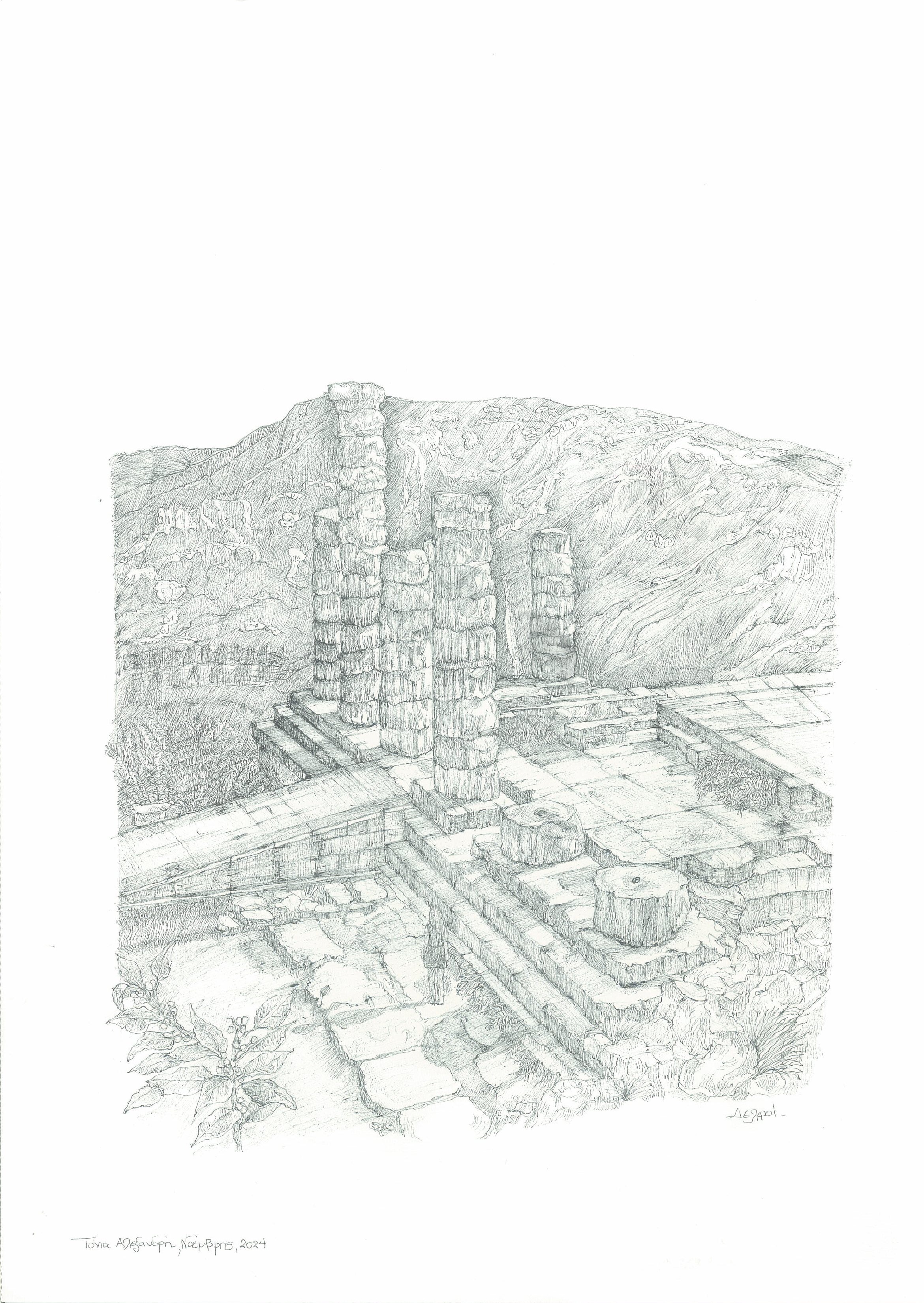 A favorite route of mine – Delphi, Itea, Galaxidi, Eratini, Nafpaktos, Galatas, Messolonghi – along the old national road.
A favorite route of mine – Delphi, Itea, Galaxidi, Eratini, Nafpaktos, Galatas, Messolonghi – along the old national road.
An excerpt from Kosmas Politis’ complex and multi-layered novel, The Lemon Grove:
«Μείναμε σιωπηλοί μέσα στη φωτερή γαλήνη των βουνών. Πολύχρωμα ζουζούνια πάνε κι έρχουνται, ανεβοκατεβαίνουν δισταχτικά τις πέτρες, κρύβουνται μέσα στη μυστήρια λόχμη του καινούριου χορταριού. Ένας χρυσαετός ξέσκισε με το κρώξιμό του το γαλανό διάστημα και χάθηκε ψηλά, πίσω από τα βράχια.
Σηκώθηκα νευριασμένος.
— Ένα πράμα δεν μπορώ να καταλάβω. Δε σας εμπνέει αυτό το περιβάλλον; Δεν είπατε ούτε λέξη! Σκεφτήκατε ποτέ όλη αυτή την περασμένη δόξα; Το κατάλευκο τέμενος ανάμεσα στους θησαυρούς που στήσαν ξακουσμένες πολιτείες κι ανάμεσα στ’ αγάλματα και τους βωμούς. Όλος ο παλιός κόσμος είχε το βλέμμα του στραμμένο εδώ, περίμενε να του μιλήσει ο θεός. Το παγκόσμιο ιερό.
Η Βίργκω τινάχτηκε ορθή………
— Δεν πρόκειται για μένα, της αποκρίθηκα. Ούτε για μένα ούτε για σας. Μιλώ για την αναβίωση αρχαίων τελετών…
Μου έκοψε την ομιλία:
— Όσο δεν ξαναζωντανεύει κι ολόκληρη η αρχαία ζωή, να τη ζήσομε όλοι εμείς καθώς που ζούμε τώρα την καθημερινή ζωή μας, θα ’ναι μονάχα μια σκηνοθεσία.
— Μα επιτέλους ποια είναι τα ιδανικά σας;
Έμεινε σκεφτική. Τα μάτια της βυθίστηκαν μακριά, πιο πέρ’ απ’ τον ορίζοντα.
— Τα ιδανικά μου;… Ένα λευκό σπιτάκι με πράσινα παραθυρόφυλλα καταμεσής σ’ ένα λιβάδι».
‘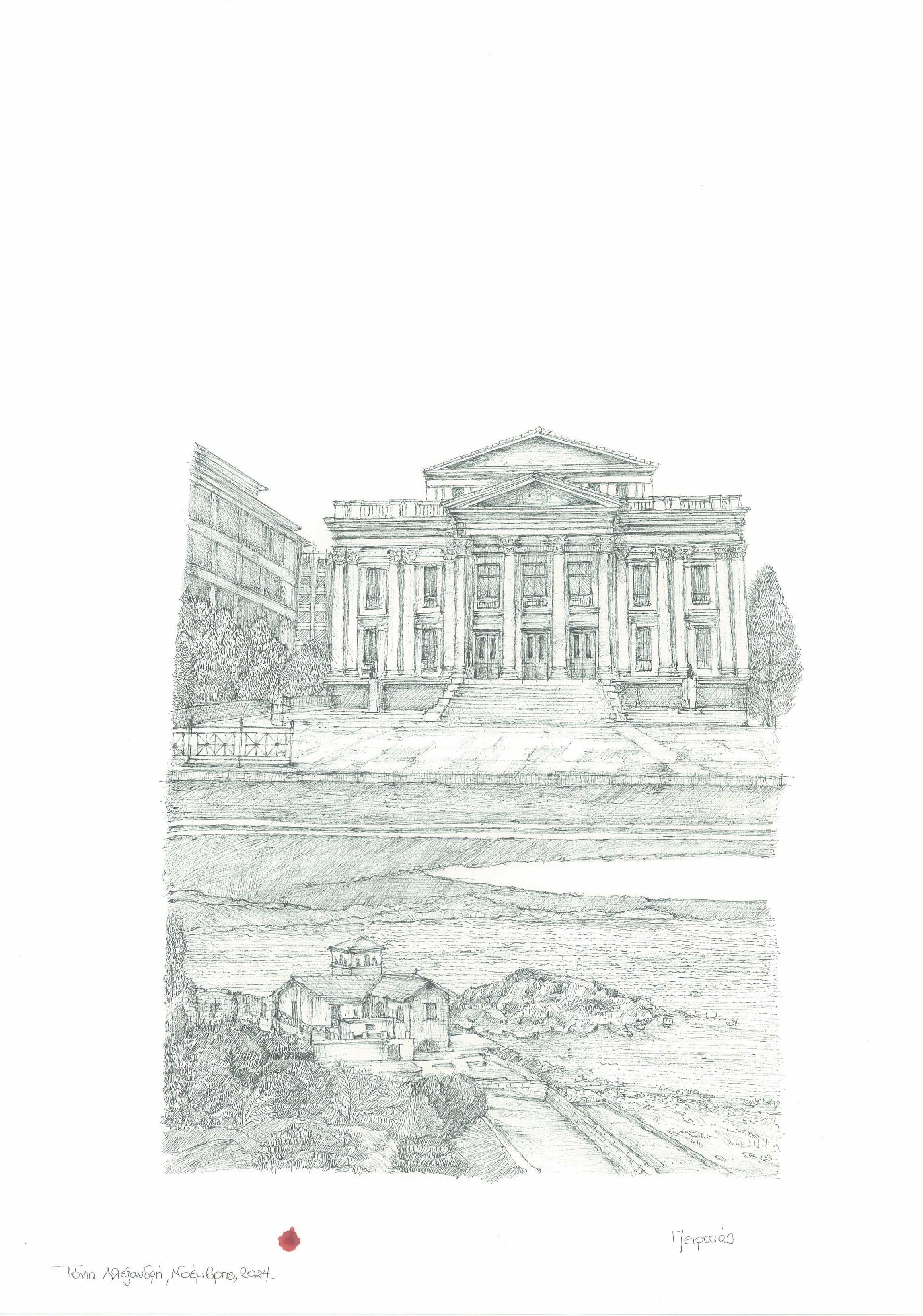 Piraeus, for me, encompasses my university years, politicization and political youth groups, uninsured work, an unexpected road injury, countless journeys, Athens-Piraeus, by electric train (on the tube), trips to the islands, departures and arrivals by ship, parents and relatives’ stories of farewells and migration.
Piraeus, for me, encompasses my university years, politicization and political youth groups, uninsured work, an unexpected road injury, countless journeys, Athens-Piraeus, by electric train (on the tube), trips to the islands, departures and arrivals by ship, parents and relatives’ stories of farewells and migration.
Stefanos Milesis writes “The Piraeus of work, of sailors, poets and intellectuals, of small boatmen and large shipowners, has stood through time as the port of the great migration.” His book, Piraeus: the port of farewell, concerns the history of the migration of Greeks to other places from the end of the 19th century to the mid-1960s and perhaps even the 1970s, without any beautification. The causes mentioned in the book of this great “hemorrhage” of population, in successive waves of migration of thousands of people, are the successive wars, the disaster of 1922, political and economic instability, and then the Second World War, the occupation and the civil war, the post-civil war period, hunger, poverty, lack of work and the absence of a working future, mainly in the provinces.
Στο πρώτο κεφάλαιο με τον τίτλο, Οι απόγονοι του Οδυσσέα, σημειώνει, κυρίως για τους μετανάστες του πρώτου μισού του 20ου αιώνα, «Αναχωρούσαν από το λιμάνι του Πειραιά χωρίς να ξέρουν τη γλώσσα της νέας χώρας που είχαν θέσει ως προορισμό, και δεν θα ήταν υπερβολή να πούμε ότι πολλοί, οι περισσότεροι, δεν γνώριζαν να γράφουν ή να διαβάζουν καν τα ελληνικά….. ». Το βιβλίο μας δίνει πληροφορίες για τις άθλιες συνθήκες των πολυήμερων ταξιδιών, κυρίως στην αρχή, την αγορά και αργότερα την κατασκευή των πρώτων ελληνικών υπερωκεάνιων, τις σκληρές συνθήκες εργασίας κι εκμετάλλευσης των μεταναστών στις χώρες υποδοχής, τουλάχιστον μέχρι να σταθούν στα πόδια τους. Αφηγείται τις συνθήκες εργασίας των μικρών γαβριάδων των αμερικάνικών στιλβωτηρίων και των «υπηρετριών» της Αυστραλίας. Κάνει εκτενή αναφορά στα Πειραιώτικα κυκλώματα, εκμετάλλευσης και εξαπάτησης των υποψηφίων μεταναστών, η οποία συνεχίστηκε ως τα μέσα του 1960, στους σαράφηδες ή αργυραμοιβούς της Τρούμπας, και τον πλουτισμό πολλών και συγκεκριμένων ατόμων από την επιχείρηση της μετανάστευσης.
Το βιβλίο περιγράφει και την διαδικασία αναζήτησης Ελληνίδων συζύγων, τις λεγόμενες «υποψήφιες νύφες» και τα συνοικέσια της μιας φωτογραφίας. Επίσης κάνει αναφορά στα άστεγα χαμίνια του Πειραιά, στρατιές από εκατοντάδες μικρά παιδιά, τα ονομαζόμενα «γαβριάδες» από τον μικρό ήρωα του Βίκτωρ Ουγκώ, τα οποία αποτελούσαν «ένα λαμπρό πεδίο παιδικής εργασίας και εκμετάλλευσης». Μάλλον αυτός ήταν και ο λόγος που τα πρώτα ιδρύματα του Πειραιά ήταν ορφανοτροφεία. Τα παιδιά δεν έμειναν στο περιθώριο στα χρόνια της μετανάστευσης καθώς τα πρακτορεία εργασίας «τα έθεσαν κι αυτά στο στόχαστρο του κέρδους» και έγινε εξαγωγή παιδιών εργατών. Η εκμίσθωση ανήλικων λούστρων από Έλληνες στην Αμερική σταμάτησε μόνο μετά από την επέμβαση της αμερικάνικης δικαιοσύνης.
Τέλος αναφέρεται στον κύκλο της «σιωπής», καθώς και στην ανάγκη δημιουργίας ενός μουσείου μετανάστευσης για τη αποφυγή της λήθης, Ο συγγραφέας θεωρεί αυτόν τον ιδιότυπο νόμο της σιωπής, ως τον δεύτερο πυλώνα συντήρησης της μετανάστευσης. Η σιωπή γύρω από τις πραγματικές αιτίες, συνθήκες και δυσκολίες, καθώς και τα εμβάσματα (αποτέλεσμα μεγάλων κόπων και θυσιών) που έστελναν οι μετανάστες στις οικογένειες τους, διατηρούσε τον μύθο του εύκολου πλουτισμού και την συνέχιση της μετανάστευσης. Η σιωπή συμβάλλει και στην λήθη της Ιστορίας. Τέλος, υποστηρίζει την ανάγκη δημιουργίας μουσείου μετανάστευσης στον Πειραιά και αναφέρει ότι δεν έγινε ποτέ κανένα αφιέρωμα στα εκατομμύρια των Ελλήνων που αναγκάστηκαν να αναχωρήσουν ίσως γιατί πιστεύεται ότι απώλεια πατρίδας είναι μόνο εδαφική και ποτέ πληθυσμιακή.
Anyway, in the rest of Europe there are several museums. To mention a few, in Ireland, with its long legacy of emigration from the Irish shores to America, Canada, Australia, and elsewhere, there are several museums that pay tribute to and explore the experience of those who left. The EPIC, an Irish Emigration Museum has twenty galleries that detail the history, heritage, and culture of the Irish diaspora. The Dunbrody Famine Ship is a faithful reproduction of an 1840s emigrant vessel that carried weary and hungry refugees fleeing Ireland’s Famine caused by a potato blight that started in 1845, which killed the crop of the impoverished Irish tenant farmers. Within 7 years, one million people had died and 1.5 million had emigrated. The Cobh Heritage Center tells the story of hundreds of years of emigration from the 1600s, when Irish people were transported to the British overseas colonies, The port of Cobh, then known as Queenstown, became the departing point of millions of emigrants. Between 1848 to 1950, 2.5 million of the six million people who left Ireland departed from Cobh.
The Red Star Line museum in Antwerpin in Belgium tells the story of the men, women and children from all over Europe, who travelled to the port of Antwerp where they embarked on the Red Star Line ships on a journey to America. From 1815 until 1940, around 60 million emigrants from all over Europe left their homeland for America. At the MEI – National Museum of Italian Emigration, one can retrace many stories, told through first-hand sources such as diaries, letters, photographs, newspapers and archival documents, of the millions of Italians that left their homeland in search of a better life from the Unification of Italy (and even before) to the present.

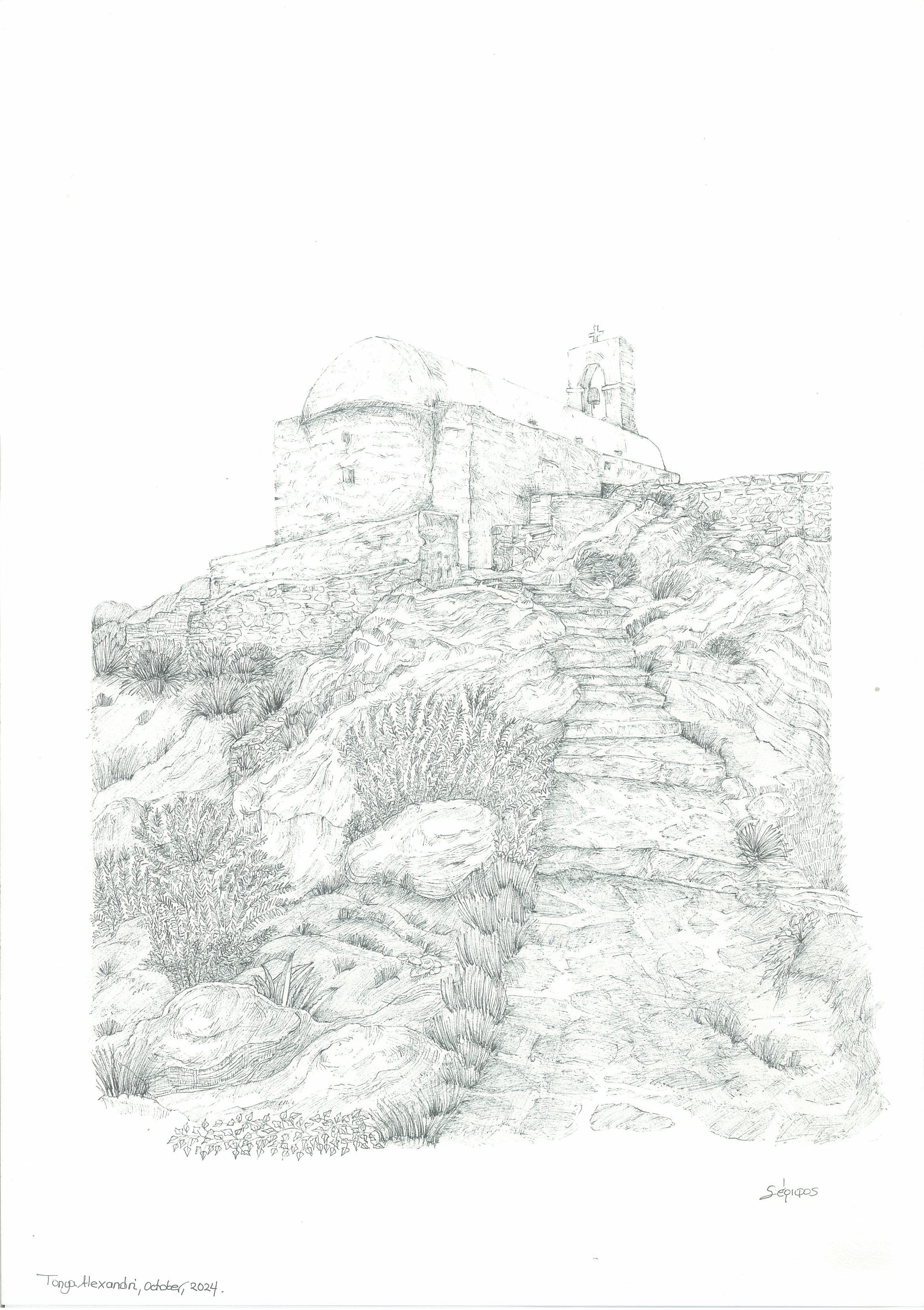
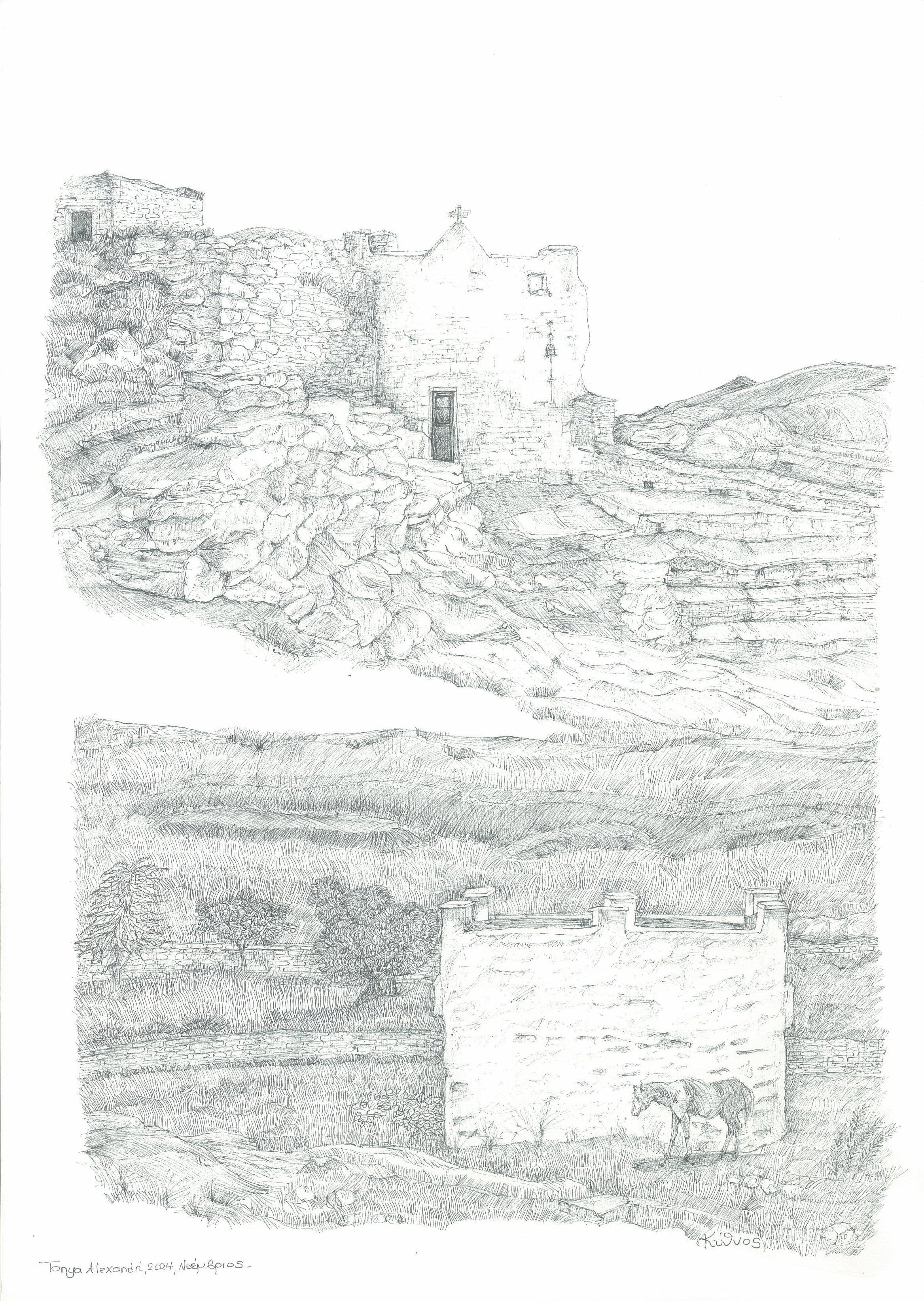
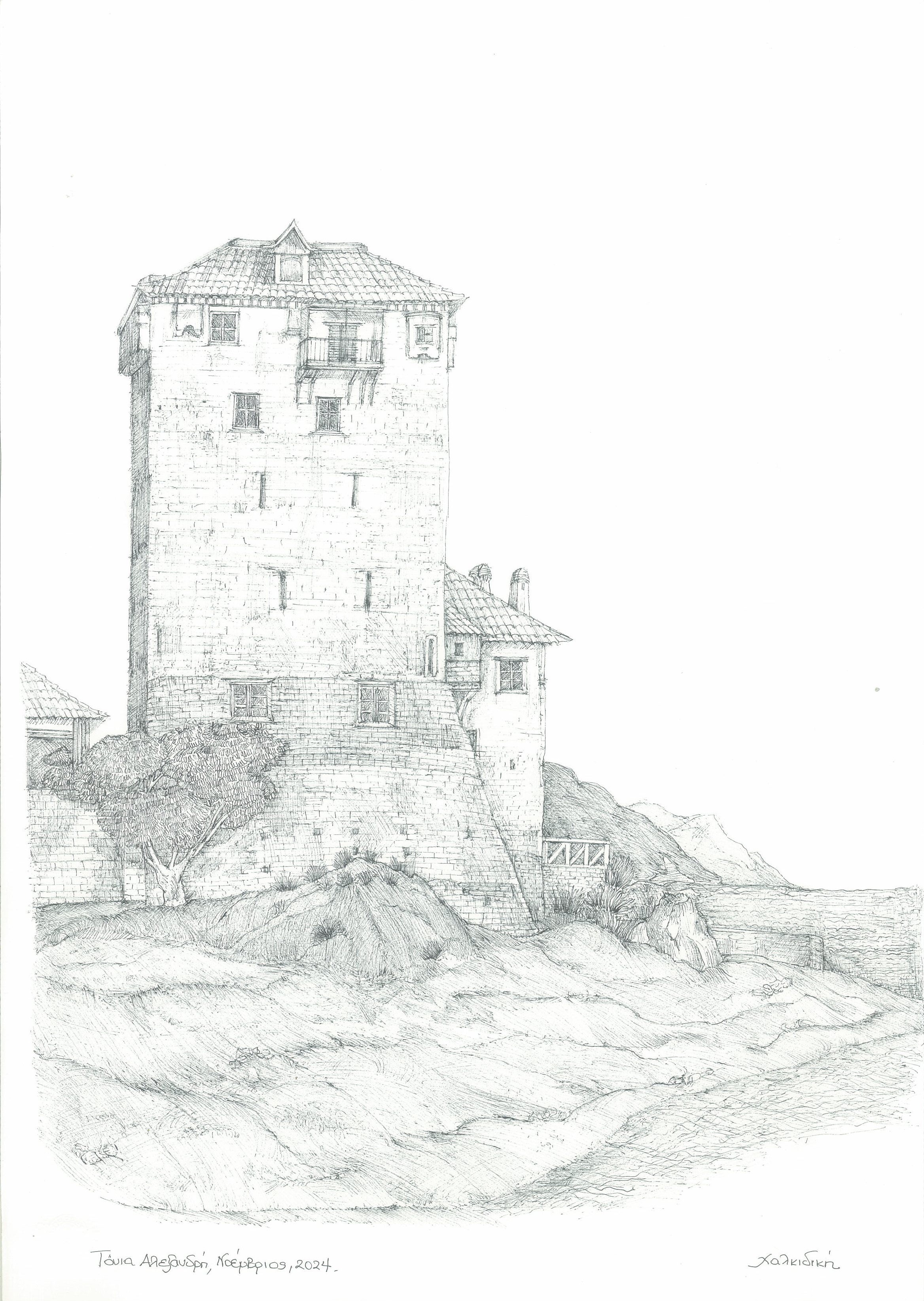
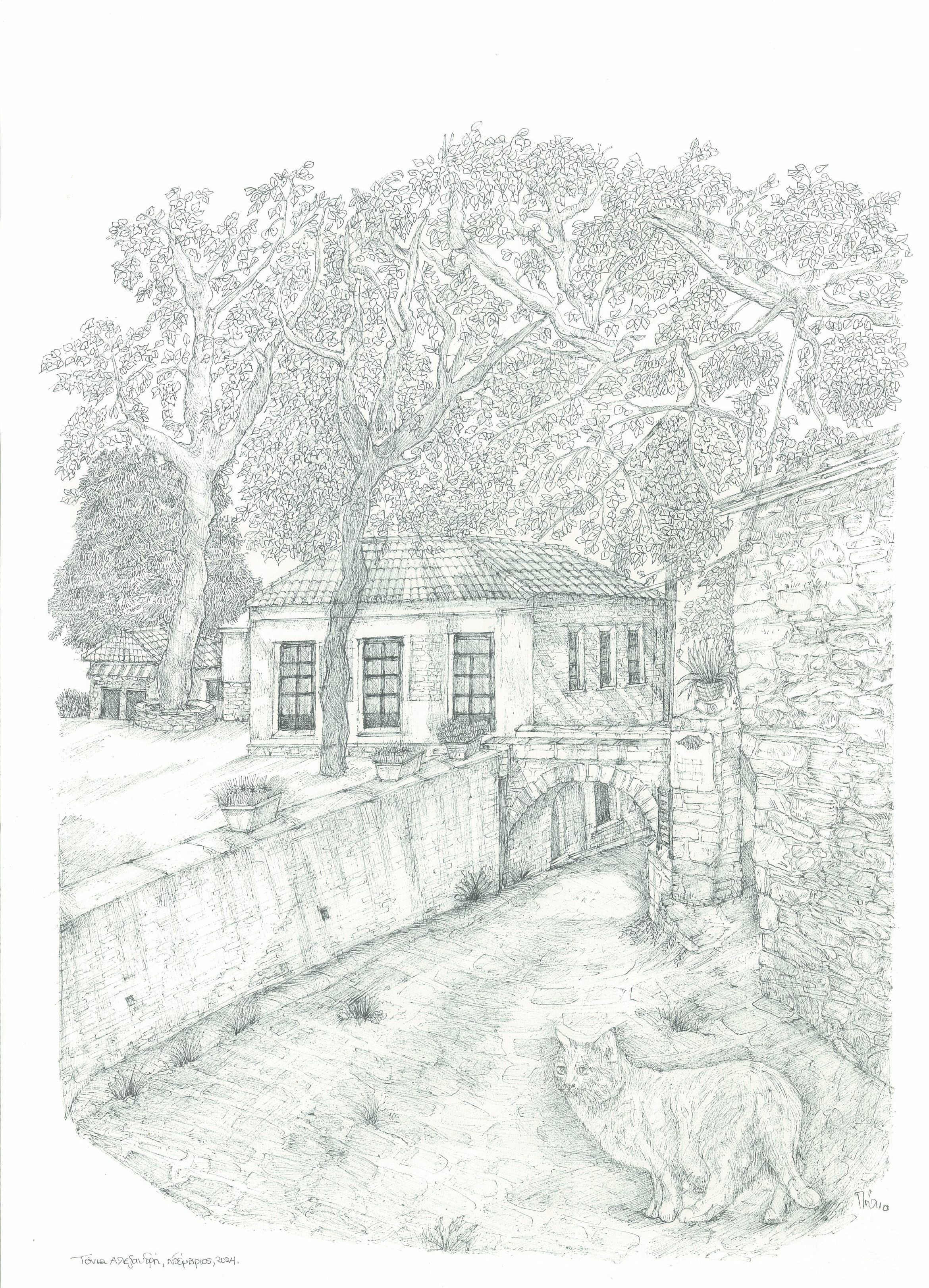
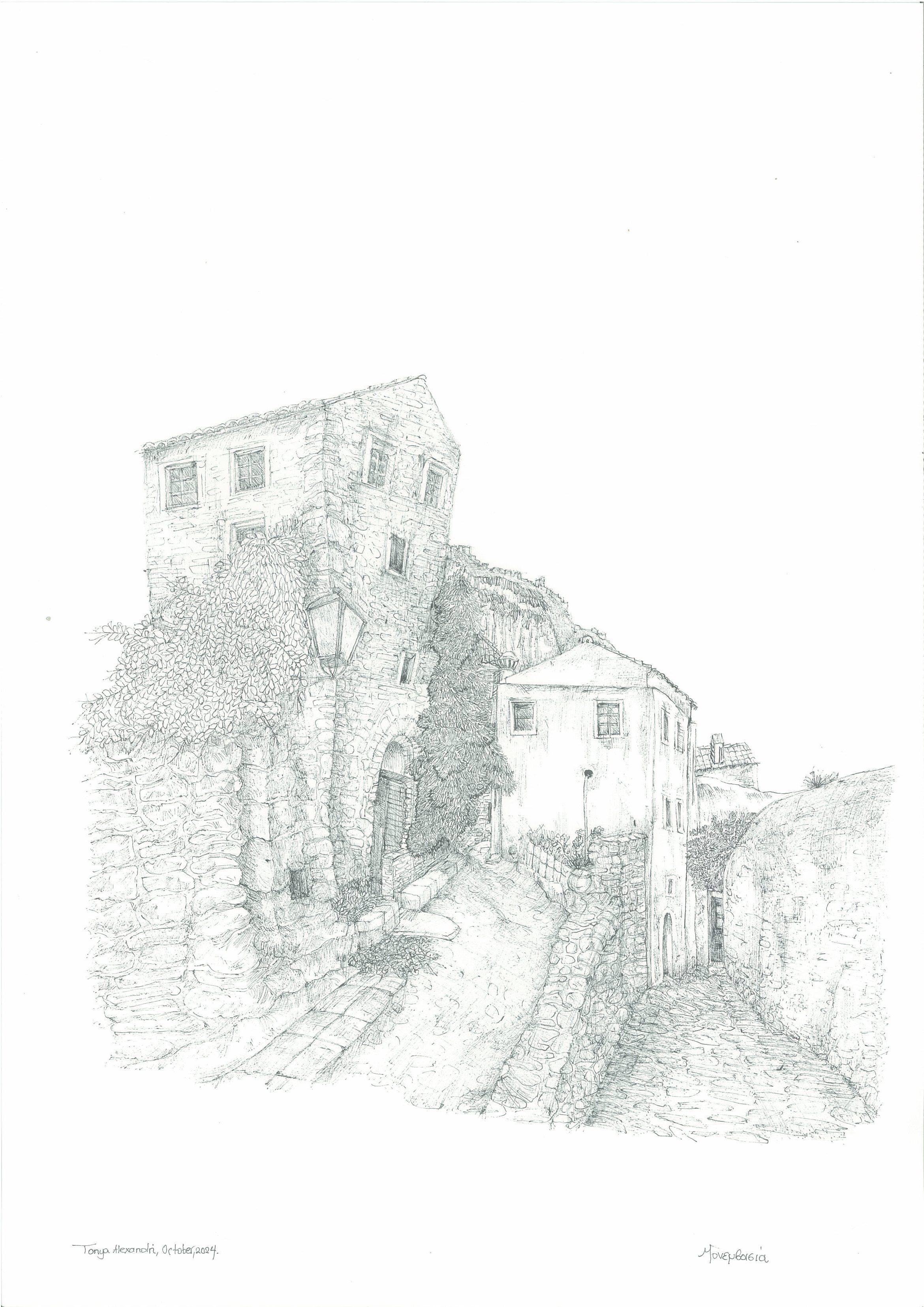
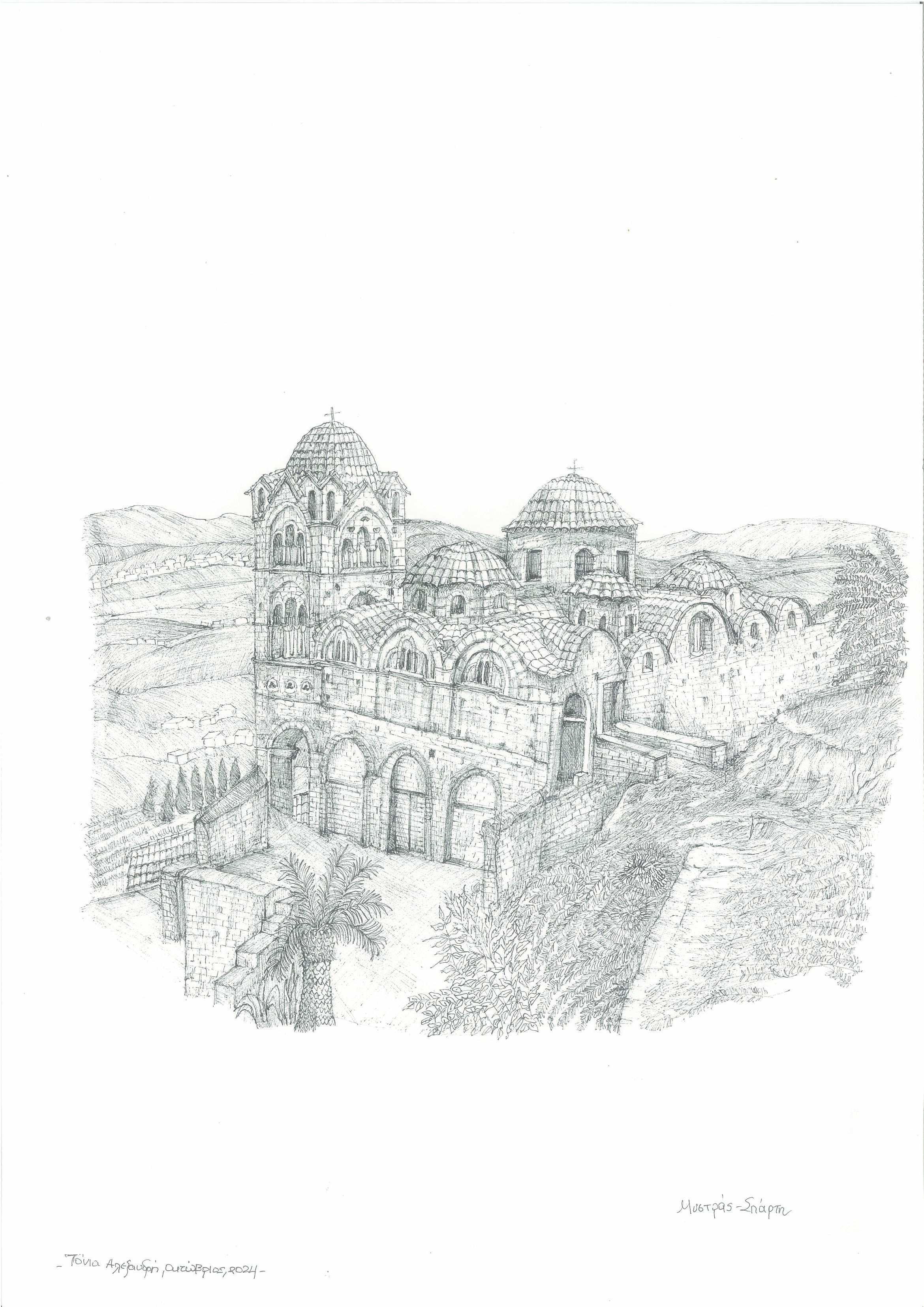 Today’s post includes some new drawings of places accompanied by a few short texts and poems.
Today’s post includes some new drawings of places accompanied by a few short texts and poems.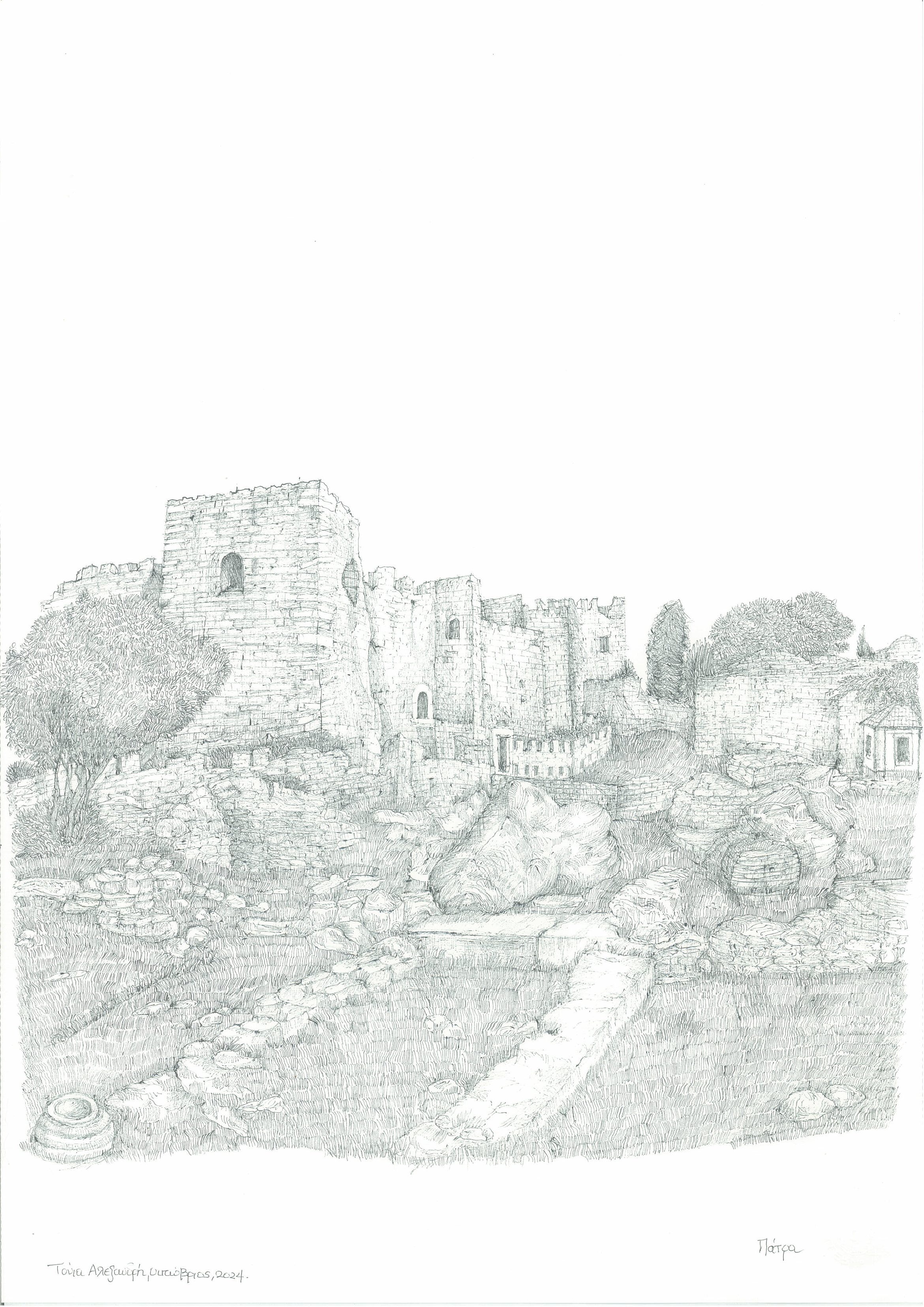 “He went to bring his family for a tour of the village. “Get to know our homeplace”, he said passionately to the children. Should I say my place? he wondered. MY place? He wondered a second time and sank into thought.’ Despina Kaitatzi-Houliomi
“He went to bring his family for a tour of the village. “Get to know our homeplace”, he said passionately to the children. Should I say my place? he wondered. MY place? He wondered a second time and sank into thought.’ Despina Kaitatzi-Houliomi